
Filter News
Area of Research
- Advanced Manufacturing (5)
- Biological Systems (1)
- Biology and Environment (102)
- Biology and Soft Matter (4)
- Building Technologies (2)
- Chemical and Engineering Materials (3)
- Chemistry and Physics at Interfaces (7)
- Clean Energy (168)
- Climate and Environmental Systems (7)
- Computational Biology (1)
- Computational Chemistry (5)
- Computational Engineering (1)
- Computer Science (3)
- Data (1)
- Earth Sciences (1)
- Electricity and Smart Grid (1)
- Energy Frontier Research Centers (7)
- Fuel Cycle Science and Technology (2)
- Functional Materials for Energy (8)
- Fusion and Fission (32)
- Fusion Energy (7)
- Geographic Information Science and Technology (1)
- Isotopes (21)
- Materials (122)
- Materials for Computing (13)
- Materials Synthesis from Atoms to Systems (8)
- Materials Under Extremes (7)
- National Security (45)
- Neutron Data Analysis and Visualization (2)
- Neutron Science (72)
- Nuclear Science and Technology (27)
- Quantum Condensed Matter (3)
- Quantum information Science (4)
- Renewable Energy (2)
- Sensors and Controls (2)
- Supercomputing (153)
- Transportation Systems (4)
News Type
News Topics
- 3-D Printing/Advanced Manufacturing (39)
- Advanced Reactors (8)
- Artificial Intelligence (46)
- Big Data (24)
- Bioenergy (51)
- Biology (59)
- Biomedical (28)
- Biotechnology (11)
- Buildings (19)
- Chemical Sciences (24)
- Clean Water (14)
- Climate Change (50)
- Composites (6)
- Computer Science (84)
- Coronavirus (17)
- Critical Materials (2)
- Cybersecurity (14)
- Decarbonization (46)
- Education (1)
- Emergency (2)
- Energy Storage (29)
- Environment (104)
- Exascale Computing (26)
- Fossil Energy (4)
- Frontier (24)
- Fusion (31)
- Grid (23)
- High-Performance Computing (44)
- Hydropower (5)
- Isotopes (27)
- ITER (2)
- Machine Learning (22)
- Materials (43)
- Materials Science (45)
- Mathematics (7)
- Mercury (7)
- Microelectronics (2)
- Microscopy (20)
- Molten Salt (1)
- Nanotechnology (16)
- National Security (37)
- Net Zero (8)
- Neutron Science (47)
- Nuclear Energy (55)
- Partnerships (16)
- Physics (29)
- Polymers (8)
- Quantum Computing (21)
- Quantum Science (30)
- Renewable Energy (1)
- Security (11)
- Simulation (32)
- Software (1)
- Space Exploration (12)
- Statistics (1)
- Summit (30)
- Sustainable Energy (44)
- Transformational Challenge Reactor (3)
- Transportation (27)
Media Contacts
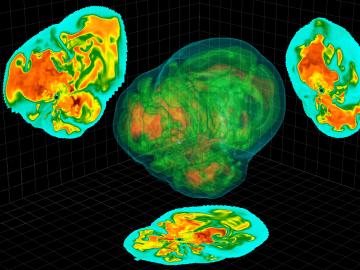
The Big Bang began the formation and organization of the matter that makes up ourselves and our world. Nearly 14 billion years later, nuclear physicists at the Department of Energy’s Oak Ridge National Laboratory (ORNL) and their partners are using America’s most powerful supercomp...
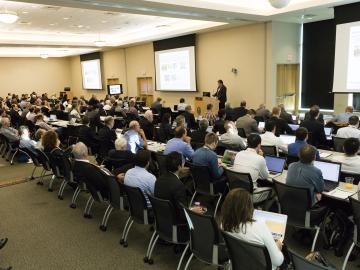
The third annual Molten Salt Reactor Workshop allowed leading voices on advanced reactors—including scientists from the national laboratory system, the Nuclear Regulatory Commission, reactor design firms and universities—to discuss current efforts in molten salt reactor work and pu...
It’s common knowledge that driving aggressively can dent gas mileage, but it’s difficult to determine exactly how much gas drivers waste. A new study by researchers at the Department of Energy’s Oak Ridge National Laboratory has quantified the impact speeding and slamming on the brakes has on fuel economy and consumption. They found that aggressive behavior behind the wheel can lower gas mileage in light-duty vehicles by about 10 to 40 percent in stop-and-go traffic and roughly 15 to 30 percent at highway speeds. This can equate to losing about $0.25 to $1 per gallon.

With the licensing to Enchi Corporation of a microbe custom-designed to produce ethanol efficiently, Oak Ridge National Laboratory (ORNL) and the BioEnergy Science Center (BESC) mark the culmination of 10 years’ research into ways to improve biofuels production. Enchi ha...
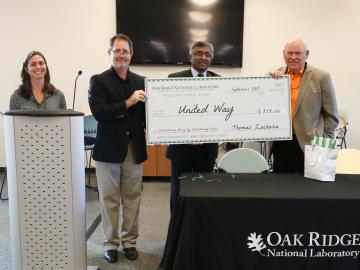
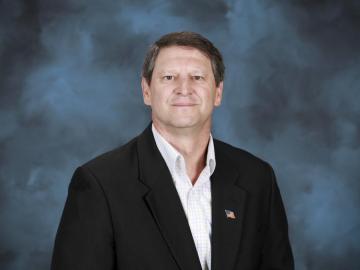
Richard “Rick” Raines has been on the forefront of protecting critical communications systems from attack since before the term “cyber” was in vogue, and he is bringing that leadership to bear as he takes on the role of director for the Electrical and Electronics Systems Research Division (EESRD) at...

The field of “Big Data” has exploded in the blink of an eye, growing exponentially into almost every branch of science in just a few decades. Sectors such as energy, manufacturing, healthcare and many others depend on scalable data processing and analysis for continued in...
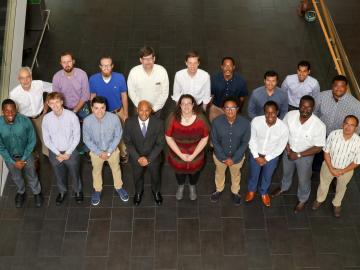
Oak Ridge National Laboratory (ORNL) hosted eight graduate students as part of the National GEM Consortium summer fellowship program this year—seven in the Energy and Environmental Sciences Directorate and one in the Computing and Computational Sciences Directorate. The par...

A team of researchers from Oak Ridge National Laboratory has been awarded nearly $2 million over three years from the Department of Energy to explore the potential of machine learning in revolutionizing scientific data analysis. The Advances in Machine Learning to Improve Scient...
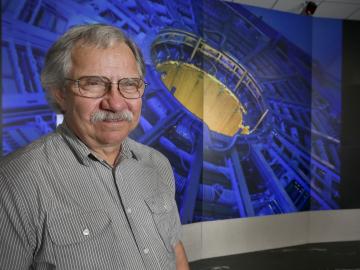
The world’s most powerful particle accelerator, the Large Hadron Collider (LHC), began running at CERN, the European Organization for Nuclear Research, in 2009. The LHC spends most of its time studying the puzzles of high-energy physics. But for one month a year, it, like the Relat...


